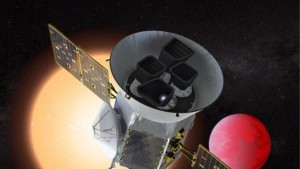NASA’s TESS spacecraft has embarked on a quest to find new worlds around neighbouring stars that could support life.TESS rode a SpaceX Falcon rocket through the evening sky, aiming for an orbit stretching all the way to the moon.
The satellite — the Transiting Exoplanet Survey Satellite, or TESS — will scan almost the entire sky for at least two years, starting at the closest, brightest stars in an effort to find and identify any planets around them.
Hundreds of thousands of stars will be scrutinised, with the expectation that thousands of exoplanets — planets outside our own solar system — will be revealed right in our cosmic backyard.
TESS won’t look for life. It’s not designed for that. Rather, it will scout for planets of all sorts, but especially those in the so-called Goldilocks or habitable zone of a star: an orbit where temperatures are neither too cold nor too hot, but just right for life-nourishing water,
The most promising candidates will be studied by bigger, more powerful observatories of the future, including NASA’s James Webb Space Telescope, due to launch in another few years as the heir to Hubble.
read more at ABC.net.au
Ask me anything
Explore related questions





